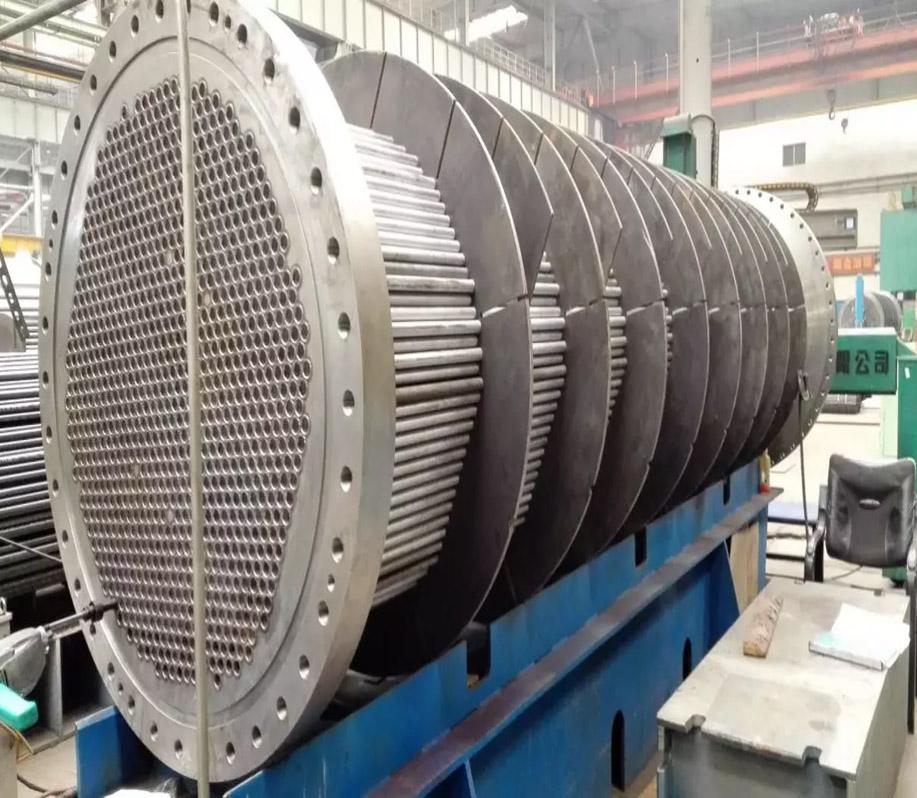Stainless Steel 321H Heat Exchanger Tubes are widely used in industries that demand exceptional performance in high-temperature environments. Engineered for superior resistance to oxidation and corrosion, these tubes are an enhanced version of 321 stainless steel, designed to offer improved strength and durability under elevated thermal conditions. This article explores the features, benefits, applications, and advantages of SS 321H Heat Exchanger Tubes in detail.
What is Stainless Steel 321H?
Stainless Steel 321H is a stabilized austenitic stainless steel alloy. It is a high-carbon version of SS 321, which itself is titanium-stabilized to resist intergranular corrosion. The “H” designation in 321H indicates a higher carbon content (0.04–0.10%) than standard 321, which provides increased high-temperature strength. It is specifically designed to withstand sustained exposure to temperatures above 1000°F (538°C), making it an ideal material for heat exchangers and similar thermal processing equipment.
Key Features of SS 321H Heat Exchanger Tubes
-
High-Temperature Strength
SS 321H tubes exhibit excellent mechanical strength at elevated temperatures. The increased carbon content allows the alloy to maintain its structural integrity and mechanical performance during prolonged exposure to high heat. -
Resistance to Oxidation and Creep
The alloy offers excellent resistance to oxidation up to 1500°F (816°C) and superior creep resistance, making it highly reliable in high-temperature heat exchanger systems. -
Stabilized Against Intergranular Corrosion
With the addition of titanium, SS 321H resists carbide precipitation during welding and at high temperatures, protecting the tubes from intergranular corrosion and increasing their service life. -
Superior Weldability and Fabrication
SS 321H can be welded and fabricated easily using standard shop fabrication practices. It does not require post-weld annealing, making it ideal for complex heat exchanger systems. -
Corrosion Resistance
While primarily selected for high-temperature service, 321H stainless steel also exhibits good corrosion resistance in a wide range of chemical environments, including moderately aggressive acids and salts.
Applications of SS 321H Heat Exchanger Tubes
Due to its exceptional properties, Stainless Steel 321H Heat Exchanger Tubes are extensively used in industries where elevated temperature and corrosion resistance are essential:
-
Petrochemical Plants: Used in heaters, coolers, and condensers that operate under extreme conditions.
-
Power Generation: Ideal for superheaters and reheaters in thermal power stations.
-
Chemical Processing: Used in heat exchangers for processing chemicals that produce aggressive vapors at high temperatures.
-
Oil and Gas Industry: Suitable for offshore and refinery heat exchangers where high thermal performance and durability are needed.
-
Aerospace and Aviation: Utilized in aircraft engine components, exhaust systems, and fuel systems.
Advantages of Using SS 321H in Heat Exchangers
-
Extended Service Life
The enhanced thermal stability and corrosion resistance of SS 321H allow for longer operational life, reducing the need for frequent replacements. -
Operational Safety and Reliability
The alloy’s ability to maintain strength under stress ensures safety and efficiency in critical systems such as pressure vessels and reactors. -
Cost-Effective in the Long Run
While the initial investment may be higher compared to conventional materials, SS 321H offers excellent value through reduced maintenance, downtime, and replacements. -
Adaptability to Harsh Environments
These tubes perform reliably in environments that involve cyclic heating, oxidizing atmospheres, and corrosive chemicals. -
Compliance with Industry Standards
SS 321H Heat Exchanger Tubes meet various international standards like ASTM A213, ASME SA213, EN, and DIN specifications, ensuring quality and performance consistency.
Manufacturing and Quality Assurance
SS 321H heat exchanger tubes are manufactured using advanced production techniques such as seamless or welded processing. Manufacturers adhere to strict quality control processes to ensure the tubes meet dimensional accuracy, surface finish, and metallurgical properties. Tubes are often subject to:
-
Hydrostatic testing
-
Eddy current testing
-
Ultrasonic inspection
-
PMI (Positive Material Identification)
-
Mechanical and chemical property evaluation
These tests ensure that the tubes are free from defects and capable of delivering high performance under demanding conditions.
Conclusion
Stainless Steel 321H Heat Exchanger Tubes are a premium solution for high-temperature applications where strength, corrosion resistance, and durability are paramount. Their superior performance in extreme environments makes them a preferred choice across various industries, including oil & gas, chemical processing, and power generation. As industries continue to evolve toward more demanding operational conditions, the use of SS 321H heat exchanger tubes ensures efficient heat transfer, system reliability, and reduced operational costs over time.
For businesses seeking robust and efficient heat transfer solutions, Stainless Steel 321H Heat Exchanger Tubes represent a strategic investment in performance, longevity, and safety.



